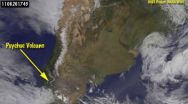Scientists develop sensitive skin for robots
Intelligent machines develop self-awareness
2011-06-30
(Press-News.org) Our skin is a communicative wonder: The nerves convey temperature, pressure, shear forces and vibrations – from the finest breath of air to touch to pain. At the same time, the skin is the organ by which we set ourselves apart from our environment and distinguish between environment and body. Scientists at TUM are now developing an artificial skin for robots with a similar purpose: It will provide important tactile information to the robot and thus supplement its perception formed by camera eyes, infrared scanners and gripping hands. As with human skin, the way the artificial skin is touched could, for example, lead to a spontaneous retreat (when the robot hits an object) or cause the machine to use its eyes for the first time to search for the source of contact.
Such behavior is especially important for robotic helpers of people traveling in constantly changing environments. According to robot vision, this is just a regular apartment in which things often change position and people and pets move around. "In contrast to the tactile information provided by the skin, the sense of sight is limited because objects can be hidden," explains Philip Mittendorfer, a scientist who develops the artificial skin at the Institute of Cognitive Systems at Technical University of Munich (Technische Universitaet Muenchen, TUM).
The centerpiece of the new robotic shell is a 5 square centimeter hexagonal plate or circuit board. Each small circuit board contains four infrared sensors that detect anything closer than 1 centimeter. "We thus simulate light touch," explains Mittendorfer. "This corresponds to our sense of the fine hairs on our skin being gently stroked." There are also six temperature sensors and an accelerometer. This allows the machine to accurately register the movement of individual limbs, for example, of its arms, and thus to learn what body parts it has just moved. "We try to pack many different sensory modalities into the smallest of spaces," explains the engineer. "In addition, it is easy to expand the circuit boards to later include other sensors, for example, pressure."
Plate for plate, the boards are placed together forming a honeycomb-like, planar structure to be worn by the robot. For the machine to have detection ability, the signals from the sensors must be processed by a central computer. This enables each sensory module to not only pass its own information, but to also serve as a data hub for different sensory elements. This happens automatically, ensuring that signals can go in alternative ways if a connection should fail.
Only a small piece of skin is currently complete. These 15 sensors, however, at least one on each segment of a long robot arm, already show that the principle works. Just a light pat or blow ensures that the arm reacts. "We will close the skin and generate a prototype which is completely enclosed with these sensors and can interact anew with its environment," claims Mittendorfer's supervisor, Prof. Gordon Cheng. Prof. Cheng expounds that this will be "a machine that notices when you tap it on the back… even in the dark."
The pioneering aspects of the concept do not end with its sensory accomplishments. Beyond this, these machines will someday be able to incorporate our fundamental neurobiological capabilities and form a self-impression. The robot has moved a step closer to humanity.
INFORMATION: END
ELSE PRESS RELEASES FROM THIS DATE:
2011-06-30
Tel Aviv — Parkinson's Disease, brought to public awareness by figures such as Michael J. Fox, is not just difficult to diagnose. It's also difficult to accurately estimate how many people actually suffer from the disease. Current statistics come from small-scale studies, usually based on information from hospital clinics, and no registries or formal databases exist to track how many people have the disease.
Dr. Chava Peretz of Tel Aviv University's School of Public Health at the Sackler Faculty of Medicine, Ph.D. student Orly Chillag-Talmor from Haifa University and ...
2011-06-30
Interruptions are frequent in football: Football players (m/f) spend on average 38 percent of the total game time not chasing the ball. This was established by sports scientists from the Chair of Training Science and Sports Informatics at TUM in a study of 56 football games. In some games, the interruptions took up as much as 53% of the time, thus exceeding the duration of the actual sports activity.
In sum, interruptions in men's and women's football are about the same. The individual interruptions, though, are significantly longer in men's football. Cheering a goal, ...
2011-06-30
A paper published online today in Nature reveals that glia play a key role in preventing the progression of the most prominent Rett Syndrome symptoms displayed by mouse models of the disease: lethality, irregular breathing and apneas, hypoactivity and decreased dendritic complexity. The discovery, funded in part by the Rett Syndrome Research Trust (RSRT) was led by Gail Mandel, Ph.D., an investigator of the Howard Hughes Medical Institute at Oregon Health and Science University.
Rett Syndrome, the most physically disabling of the autism spectrum disorders, is caused ...
2011-06-30
In December 2010, a pair of mismatched stars in the southern constellation Crux whisked past each other at a distance closer than Venus orbits the sun. The system possesses a so-far unique blend of a hot and massive star with a compact fast-spinning pulsar. The pair's closest encounters occur every 3.4 years and each is marked by a sharp increase in gamma rays, the most extreme form of light.
The unique combination of stars, the long wait between close approaches, and periods of intense gamma-ray emission make this system irresistible to astrophysicists. Now, a team using ...
2011-06-30
VIDEO:
University of Western Ontario researchers Jody Culham and Jason Gallivan describe how they can use a fMRI to determine the action a person was planning, mere moments before that action...
Click here for more information.
Bringing the real world into the brain scanner, researchers at The University of Western Ontario from The Centre for Brain and Mind (http://www.uwo.ca/its/brain/) can now determine the action a person was planning, mere moments before that action is actually ...
2011-06-30
VIDEO:
This GOES-13 satellite imagery shows the Chilean caldera still emitting a steady stream of ash, three weeks after the initial eruption on June 4, 2011. The cold winter wind from...
Click here for more information.
The Puyehue-Cordón volcano in Chile continues to spew ash that is still disrupting travel as far as Australia and New Zealand this week. A new animation of satellite imagery just released from the NASA/NOAA GOES Project shows the ash spewing from the ...
2011-06-30
Online parcel delivery specialist Parcel2Go has reaffirmed its view that companies in the UK should take measures to ensure their deliveries are not disrupted by industrial action.
Royal Mail released its annual report this week, which revealed a GBP120m loss for the year - equivalent to over GBP2m a week. Chief executive Moya Greene has said the business must change, and it is believed up to 43,000 jobs are at risk as mail centres across the country face closure. In response, union officials said that attempts to use employees as a political football would "inevitably ...
2011-06-30
Workers' compensation is a program designed to help both employees and employers if an occupational accident occurs and a worker is injured. Worker's compensation protects workers by providing coverage for medical expenses and loss of earnings in the even of an accident or health-related layoff.
This program also protects employers by preventing civil lawsuits against employers when they are potentially responsible for an accident. Workers' compensation benefits for a permanent disability could give an injured worker lump sum payments for that person's lifetime. Filing ...
2011-06-30
June 29, 2011 -- The onset of puberty is a critical moment for reaching girls with health messages and information, and the stakes are particularly high in countries where the HIV/AIDS epidemic rages and where threats to female reproductive health abound. Yet to date, the healthcare community in low-resource countries has tended to neglect this opportunity and instead concentrate efforts on young women who are older and of reproductive age.
In Tanzania, a multi-year project to address this gap has been led by Marni Sommer, DrPH, MSN, RN, at Columbia University's Mailman ...
2011-06-30
(SACRAMENTO, Calif.) — Researchers at the UC Davis Cancer Center have discovered a way of sensitizing muscle-invasive bladder cancer cells so that they succumb to the toxic effects of chemotherapy. The finding adds to mounting evidence that tiny strands of RNA — called microRNA — play key roles in some of the deadliest types of cancer.
In the current study, published online June 28 in International Journal of Cancer, researchers boosted the production of a microRNA found in bladder cancer cell lines — encoded for by the gene miR-34a — and found that this resulted in ...
LAST 30 PRESS RELEASES:
[Press-News.org] Scientists develop sensitive skin for robots
Intelligent machines develop self-awareness


